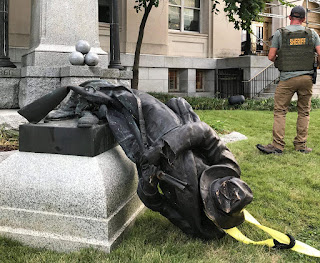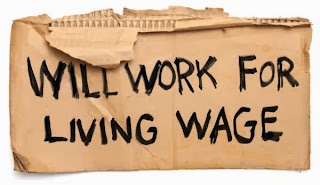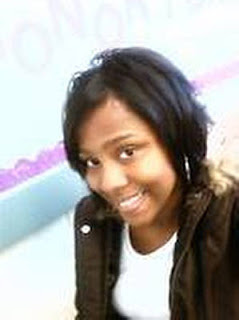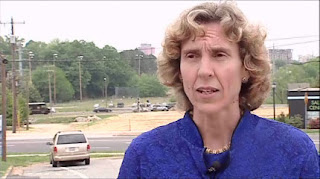



(During an Interview with a TIME magazine reporter, President Mahmoud Ahmadinejad became very nervous and defensive when asked about concealing additional Nuke plants.)
Visit msnbc.com for Breaking News, World News, and News about the Economy
Iran Test Fires Short-Range Missiles
Iran said it successfully test-fired short-range missiles during military drills Sunday by the elite Revolutionary Guard, a show of force days after the U.S. warned Tehran over a newly revealed underground nuclear facility it was secretly constructing.
Gen. Hossein Salami, head of the Revolutionary Guard Air Force, said Iran also tested a multiple missile launcher for the first time. The official English-language Press TV showed pictures of at least two missiles being fired simultaneously and said they were from Sunday's drill in a central Iran desert. In the clip, men could be heard shouting "Allahu Akbar" as the missiles were launched.
"The message of the war game for some arrogant countries which intend to intimidate is that we are able to give a proper, strong answer to their hostility quickly," state television quoted Salami as saying. He said the missiles successfully hit their targets.
The powerful Revolutionary Guard controls Iran's missile program.
The tests came two days after the U.S. and its allies disclosed that Iran had been secretly developing a previously unknown underground uranium enrichment facility and warned the country it must open the nuclear site to international inspection or face harsher international sanctions. The drill was planned in advance of that disclosure.
The newly revealed nuclear site in the arid mountains near the holy city of Qom is believed to be inside a heavily guarded, underground facility belonging to the Revolutionary Guard, according to a document sent by President Barack Obama's administration to lawmakers.
After the strong condemnations from the U.S. and its allies, Iran said Saturday it will allow U.N. nuclear inspectors to examine the site.
Nuclear experts said the details that have emerged about the site and the fact it was being developed secretly are strong indications that Iran's nuclear program is not only for peaceful purposes, as the country has long maintained.
By U.S. estimates, Iran is one to five years away from having a nuclear weapons capability, although U.S. intelligence also believes that Iranian leaders have not yet made the decision to build a weapon.
Iran also is developing a long-range ballistic missile that could carry a nuclear warhead, but the administration said last week that it believes that effort has been slowed. That assessment paved the way for Obama's decision to shelve the Bush administration's plan for a missile shield in Europe, which was aimed at defending against Iranian ballistic missiles.
Salami said Iran would test medium-range Shahab-1 and Shahab-2 missiles on Sunday night and long-range Shahab-3 missiles on Monday, during the military drill set to last several days.
Salami said Fateh, Tondar and Zelzal missiles were test fired on Sunday, but did not give specifics on range or other details. All are short-range, surface-to-surface missiles.
He told reporters Iran had reduced the missiles and their ranges and enhanced their speed and precision so they could be used in quick, short-range engagements. He also said they are now able to be launched from positions that are not as easy to hit.
He said the current missile tests and military drills are indications of Iran's resolve to defend its national values and part of a strategy of deterrence and containment of missile threats.
Iran has had the solid-fuel Fateh missile, with a range of 120 miles (193 kilometers), for several years. Fateh means conqueror in Farsi and Arabic. It also has the solid-fueled, Chinese-made CSS 8, also called the Tondar 69, according to the Wisconsin Project on Nuclear Arms Control, a private group that seeks to stop the spread of weapons of mass destruction. The Tondar, which means thunder, has a range of about 93 miles (150 kilometers.)
Iran has previously tested the Zelzal missile, versions of which have ranges of 130-185 miles (210-200 kilometers. In July 2006, Israeli military officials said their jets had destroyed a missile in Lebanon named Zelzal, which they said Hezbollah had received from Iran and could reach Tel Aviv. Zelzal means earthquake.
Iran's last known missile tests were in May when it fired its longest-range solid-fuel missile, Sajjil-2. Tehran said the two-stage surface-to-surface missile has a range of about 1,200 miles (1,900 kilometers) – capable of striking Israel, U.S. Mideast bases and Europe.
The revelation of Iran's secret site has given greater urgency to a key meeting on Thursday in Geneva between Iran and six major powers trying to stop its suspected nuclear weapons program.
The U.S. and its partners plan to tell Tehran at the meeting that it must provide "unfettered access" for the International Atomic Energy Agency, the U.N. nuclear watchdog, within weeks.
The facility is Iran's second uranium-enrichment site working to produce the fuel that could eventually be used in a nuclear weapon.
A close aide to Supreme Leader Ayatollah Ali Khamenei said Saturday the site will be operational soon and would pose a threat to those who oppose Iran.
"This new facility, God willing, will become operational soon and will blind the eyes of the enemies," Mohammad Mohammadi Golpayegani told the semi-official Fars news agency.
Evidence of the clandestine facility was presented Friday by Obama, British Prime Minister Gordon Brown and French President Nicolas Sarkozy at the G-20 economic summit in Pittsburgh. On Saturday, Obama offered Iran "a serious, meaningful dialogue" over its disputed nuclear program, while warning Tehran of grave consequences from a united global front.
Israeli Foreign Minister Avigdor Lieberman said Saturday the revelation was firm proof Iran was seeking nuclear weapons.
Israel considers Iran a strategic threat with its nuclear program, missile development and repeated calls by President Mahmoud Ahmadinejad for Israel's destruction. It has not ruled out a pre-emptive strike on Iran's nuclear sites.
In 1981, Israeli warplanes bombed Iraq's Osirak nuclear reaction and in 2007, Israel bombed a site in Syria that the U.S. said was a nearly finished nuclear reactor built with North Korean help that was configured to produce plutonium – one of the substances used in nuclear warheads.
Israel's Foreign Ministry had no immediate comment on the missile tests.
Vice President Ali Akbar Salehi, who heads Iran's nuclear program, said Saturday that U.N. nuclear inspectors could visit the nuclear site but did not provide a timeframe. On Sunday, he told Press TV Iran and the IAEA would work out the timing of the inspection.
The small-scale site is meant to house no more than 3,000 centrifuges – much less than the 8,000 machines at Natanz, Iran's known industrial-scale enrichment facility, but they could still potentially help create bomb-making material.
Experts have estimated that Iran's current number of centrifuges could enrich enough uranium for a bomb in as little as a year. Washington has been pushing for heavier sanctions if Iran does not agree to end enrichment.
Iran To Allow UN Inspection Of Nuclear Site
Iran said Saturday it will allow U.N. nuclear inspectors to examine its newly revealed, still unfinished uranium enrichment facility as world criticism mounted over the underground site that was developed secretly.
The presence of a second uranium-enrichment site that could potentially produce material for a nuclear weapon has provided one of the strongest indications yet that Iran has something to hide – despite its repeated assertions that its program is only to generate electric power.
That impression was reinforced by a close aide to Supreme Leader Ayatollah Ali Khamenei, who said the site will be operational "soon" and would pose a threat to those who oppose Iran.
"This new facility, God willing, will become operational soon and will blind the eyes of the enemies," Mohammad Mohammadi Golpayegani told the semi-official Fars news agency.
The existence of the secret site was first revealed by Western intelligence officials and diplomats on Friday. It is located in the arid mountains near the holy city of Qom, inside a heavily guarded, underground facility belonging to Iran's elite Revolutionary Guards, according to a document sent by the Obama administration to lawmakers.
The revelation of the secret site has given greater urgency to a key meeting on Thursday in Geneva between Iran and six major powers trying to stop its suspected nuclear weapons program.
The U.S. and its partners plan to tell Tehran at the meeting that it must provide "unfettered access" for the International Atomic Energy Agency to its previously secret Qom enrichment facility within weeks, a senior Obama administration official said Saturday in Washington.
The U.S., Britain, France, Germany, China and Russia also will present in the meeting a a so-called transparency package – including access to scientists, documents and computers – covering all of Iran's nuclear activities across the country, the official said. The official spoke on condition of anonymity in order to discuss plans that are not yet ready to be announced.
The six powers will demand that Iran prove to the increasingly skeptical group that its intentions with its various sites are peaceful and energy-related, as Iran claims, and not for weapons development, as the West believes, the official said Saturday.
These nations now agree that they are less inclined to listen to suspect arguments or incomplete evidence – viewing it as a stall tactic, the official said.
But beyond the timeframe of "weeks" for coming clean on Qom, the six countries will not give Iran a specific deadline to provide the information about its overall program, the official said.
The development of such a timeframe will depend on the Iranians' actions in the meeting and directly after it, the official said.
Earlier Saturday, President Barack Obama in his weekly radio and Internet address offered Iran "a serious, meaningful dialogue" over its disputed nuclear program, while warning Tehran of grave consequences from a united global front.
Evidence of the clandestine facility was presented Friday by Obama, British Prime Minister Gordon Brown and French President Nicolas Sarkozy at the G-20 economic summit in Pittsburgh.
Israeli Foreign Minister Avigdor Lieberman said the revelation was firm proof Iran was seeking nuclear weapons.
"This removes the dispute whether Iran is developing military nuclear power or not and therefore the world powers need to draw conclusions," Lieberman told Israel radio. "Without a doubt, it is a reactor for military purposes not peaceful purposes."
Israel considers Iran a strategic threat due to its nuclear program, missile development and repeated references by President Mahmoud Ahmadinejad to Israel's destruction.
Vice President Ali Akbar Salehi, who heads Iran's nuclear program, said on national television that inspectors from the IAEA could visit the site, though he did not specify when.
Salehi said there was nothing secret about the site and that Iran complied with U.N. rules that require it to inform the world body's nuclear agency six months before a uranium enrichment facility becomes operational.
"Under (NPT) rules, we are required to inform the IAEA of the existence of such a facility 180 days before introducing materials but we are announcing it more than a year earlier," he said.
The Iranians claim to have withdrawn from an agreement with the IAEA requiring them to notify the agency of the intent to build any new nuclear facilities and instead are now only subject to the six-month notification requirement before a facility becomes operational.
But the IAEA says Tehran cannot unilaterally withdraw from that bilateral agreement and still should have announced its plans to build the facility.
The statement by Khamenei's aide that the facility will be operational "soon" seemed to suggest that it could be ready even ahead of the 18-month figure cited by Salehi.
The small-scale site is meant to house no more than 3,000 centrifuges – much less than the 8,000 machines at Natanz, Iran's known industrial-scale enrichment facility, but they could still potentially help create bomb-material.
Experts have estimated that Iran's current number of centrifuges could enrich enough uranium for a bomb in as little as a year. Washington has been pushing for heavier sanctions if Iran does not agree to end enrichment.
U.N. Secretary General Ban Ki-moon expressed grave concern about the facility and said "the burden of proof is on Iran," in a statement by his office released after he met privately with Ahmadinejad Friday night.
Salehi said construction of the Qom facility was a "precautionary measure" to protect Iran's nuclear facilities from possible attacks.
"Given the threats we face every day, we are required to take the necessary precautionary measures, spread our facilities and protect our human assets. Therefore, the facility is to guarantee the continuation of our nuclear activities under any conditions," he told the television.
Hans Blix, the former chief U.N. weapons inspector in Iraq, however, told Sky News television that Iran was clearly bucking the international community's demand that it keep its activities transparent.
Blix, speaking from Stockholm, told the broadcaster that the clerical regime was clearly going against the spirit of the international community's demands.
"The revelation of a second plant shows that they are not exactly transparent, as the IAEA has asked them to be," he said. "This has not been an exercise in openness."
If Iran were developing nuclear weapons, it would be at precisely such a place, noted Mark Fitzpatrick, of the London-based International Institute for Strategic Studies.
"If they were to develop a nuclear weapon they would probably do it at a clandestine facility so that they wouldn't trigger the obvious trip wire," he said.
While an actual weapon is several years away, said Paul Rogers a security expert at the University of Bradford in northern England, something rudimentary could be rigged up within a year if Iran stepped up its enrichment activity.
"If it were to re-enrich its low-grade uranium to weapons-grade for an experimental device it would take about a year," he said. "That would almost be a demonstration to show it had the capability."
The key Western powers at the United Nations have given Tehran until year's end to cease enriching uranium or face new sanctions.
View Larger Map
Sources: Huffington Post, MSNBC, TIME, AP, Google Maps




































































.jpg)























No comments:
Post a Comment